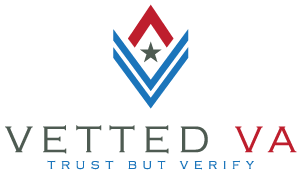Many people dream about the day they can retire. Whether you’re early in your career, closer to the traditional retirement age, or would like to retire early, you will need to have a substantial amount of money saved to maintain your current standard of living when you officially leave the workforce.
Do you know how much money you’ll need to retire?
If you’re like the majority of Americans, you don’t know the answer. Experts suggest a safe withdrawal amount each year is about 4% of your savings. This means you’ll need to have saved about 25 times your annual spending by the time you retire to make your savings last for a traditional 30-year retirement.
Set a retirement savings goal
Something is always best achieved when you are working toward a specific goal. To determine the amount of money you will need to save to retire comfortably, decide the age you would like to retire. Social Security retirement benefits can start being withdrawn at age 62 or as late as age 70. Everyone born in 1960 or later can receive full retirement benefits at age 67. The longer you delay withdrawing retirement benefits, the more you are eligible to receive. If you want to retire earlier than 62, you will need to fully fund your retirement yourself.
Next, assess your current lifestyle. What do you want to maintain, and what expenses could you reduce or remove? Do you intend to have your home paid off so that you won’t need to draw on your savings to pay your monthly mortgage?
Finally, decide how you’d like to live in retirement. Some people want to travel, while others choose to spend more time with their family. Whichever you choose, estimate how much it will cost each year to achieve your preferred retirement lifestyle. Once you have assigned a monetary value to your goal, it will provide you with a clear path to follow.
Benchmark your retirement savings
If you’re in your 20s or 30s, it isn’t easy to imagine what you would prefer to do in retirement. Use these savings benchmarks from Fidelity as a goal to get you started. To reach 1x of your salary by age 30, you should start by saving 15% of your income at age 25, which includes any matching contribution from your employer. If you’re behind the benchmark, don’t let that deter you from saving. At the very minimum, you should aim to save the amount that your employer matches. Consider it free money!
Your Age Saving Benchmarks
Age Goal to Reach
- 30 1x salary saved today
- 35 2x salary saved today
- 40 3x salary saved today
- 45 4x salary saved today
- 50 5x salary saved today
- 55 6x salary saved today
- 60 7x salary saved today
- 65 8x salary saved today
Saving for retirement with a 401(k) plan
A 401(k) plan is an employee-sponsored retirement plan that many employers include in their benefits package. Most 401(K) plans enable you to select how your money is invested. Your employer can choose to contribute as well. The funds you contribute to your 401(k) are pre-tax money, and you will have to pay taxes once in retirement. You will get full access to this account at 59-1/2 years old, no matter how long you have had the plan. Once you decide to withdraw from this savings account, you will have to pay taxes on the amount.
In 2022 annual limit you can contribute to your 401(k) plan is $20,500. If you’re aged 50 and older, you can contribute an additional $6,500, bringing your total 401(k) contributions for 2021 to $27,000.
Saving for retirement with a Roth IRA
Another way to save for retirement is to set up an individual retirement account. A Roth IRA is slightly different from 401(k) plans because the account is set up through a financial institution instead of receiving a retirement plan through your employer. If you are self-employed or your employer doesn’t offer a 401(k) plan, you should set up a Roth IRA account.
With a Roth IRA, contributions to the account are made after-tax now. As long as you’ve owned your account for 5 years and you’re aged 59½ or older, you can withdraw your money when you want to, and you won’t owe any federal taxes. The Roth IRA limit in 2022 is $6,000 for those under age 50 and $7,000 for those age 50 or older.
Increased 401(k) and IRA contributions limits in 2023
On Oct 21, 2022, the IRS announced an increase to 2023 contribution limits for 401(k)s to keep pace with inflation. Individuals will be able to contribute up to $22,500 into your 401(k), 403(b), most 457 plans and the Thrift Savings Plan for federal employees. The catch-up contribution for plan participants who are 50 or older will rise $7,500 to a limit of $30,000 in 2023.
Contributions to traditional IRAs and after-tax Roth IRAs will increase to $6,500 but the IRA catch-up contribution limit remains at $1,000.
Plan for retirement with a financial planner
Meeting with a financial planner long before you retire can help you plan the best ways to pay off your debts and budget effectively to save for your retirement.
Many investment companies that offer retirement plans have financial planners on staff who can advise you for free or a small fee on the best way to invest your 401(k) and/or Roth IRA payments for your age and your financial goals.
Saving for your retirement must be thought of as a journey, not a sprint. The key to having a comfortable life in retirement is to start saving now and increase your savings as your salary increases.





